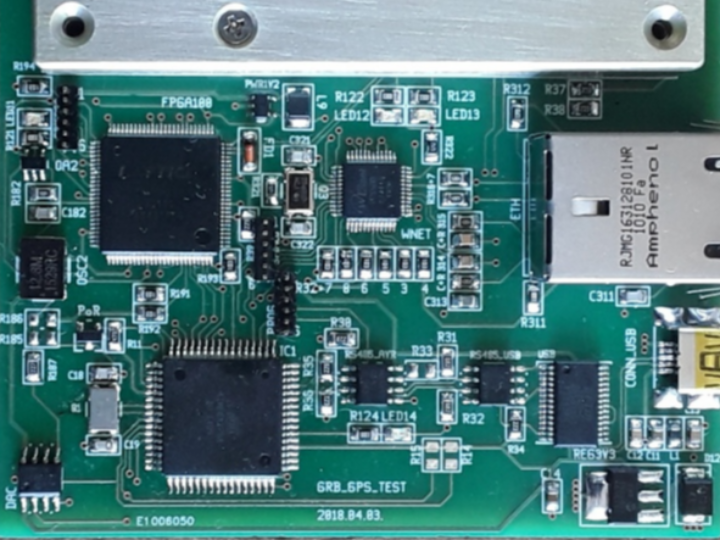CAMELOT GPS TIMESTAMPING TEST BOARD
CAMELOT GPS TIMESTAMPING TEST BOARD

1. INTRODUCTION
The rapid localization and characterization of the high energy phenomena associated with gamma-ray bursts (GRBs) are among the most important challenges of today’s observational astrophysics. The recent simultaneous detection of a GRB and the gravitational waves source GW1708171–3 further increased the interest in the rapid localization of the electromagnetic counerparts of GW sources. One of the many possible ways of localizing GRBs is based on their precise timing using numerous space-borne scintillator-based soft gamma-ray detectors evenly distributed in the low Earth orbit. Here, and in two companion papers submitted to this conference, we propose the CAMELOT (Cubesats Applied for MEasuring and LOcalising Transients) mission,4 which is a fleet of nanosatellites of the 3U cubesat standard equipped with such sensitive detectors.5 Recently, we demonstrated5, 6 that thin caesium iodide (CsI) crystals equipped with multi-pixel photon counters (MPPCs) can be integrated on 3U cubesats and used to detect and characterize GRBs.
Our nanosatellite design includes four separate CsI scintillation detectors on two perpendicular sides of the satellites. Each of the scintillator crystals is equipped with two separate MPPC sensors.4 This setup allows us to perform a readout supported by coincidence detection, and the detector geometry provides additional constraints on the localization, independently of timing. Thereore, to effectively achieve our scientific goals and in the same time provide redundancy, eight separate channels are needed to be monitored and analyzed simultaneously.
Due to the limited power, redundancy, reprogramming and reconfiguration requirements, heat production and the onboard space availability for the circuits, a careful trade-off analysis is needed to choose the most suitable components and configuration for the payload electronics. We study the use of field-programmable gate arrays and microcontroller units, including signal shaping, triggering, time-stamping as well as housekeeping, brownout and watchdog functionality. In addition, several separate components are also needed to be included within the payload electronics, most importantly a GPS receiver. The recent advancement of such receivers allows us to perform onboard time-keeping and time-stamping of GRB events with a sub-millisecond accuracy. Assuming low-Earth orbit and a timing accuracy of the order of tens of microseconds, the corresponding celestial position accuracy will be in the range of 10 arcminutes, which is well matched for rapid ground-based or space-borne follow-up campaigns.
In this paper we summarize the key concepts of a GPS timestamping unit designed for precise and accurate retrieval of instances related to scintillation events inducted by gamma-ray photons. This unit is based on the PiNAV-L1 GPS receiver which provides a NMEA-compatible UART stream and has a Valid Position Pulse (VPP) output for which a timestamp is associated with a 100 ns resolution and better-than 1 µs accuracy (within 2-σ). Like in the case of many commercial GPS receivers, the PiNAV-L1 model provides both the NMEA sequences and the VPP output with a period of 1 seconds.
In order to make laboratory testing easier, we interfaced this unit with an onboard USB and Ethernet interface. The former one acts as the primary power supply of this GPS test unit as well as provides an RS485 interface for the host microcontroller (via an FT232 USB-UART bridge). The Ethernet subsystem is based on a 100Mbit, fullduplex and fully integrated TCP/UDP/IP/MAC/PHY core and allows a low-latency communication interface in order to compare the timestamping precision and accuracy with Network Time Protocol (NTP) and/or another UDP/IP based services.
https://arxiv.org/pdf/1806.03685.pdf
